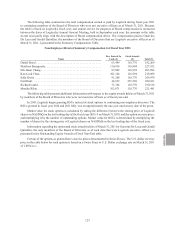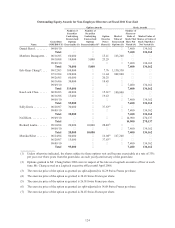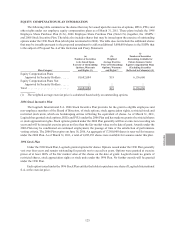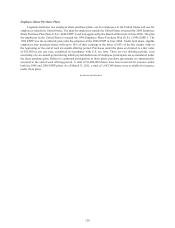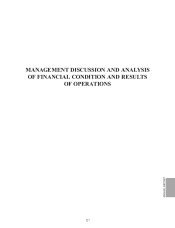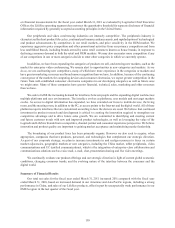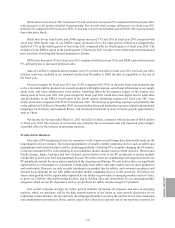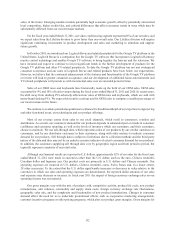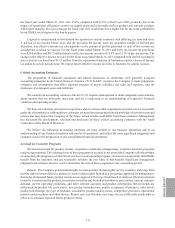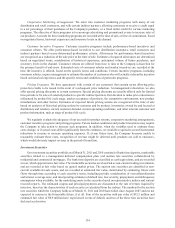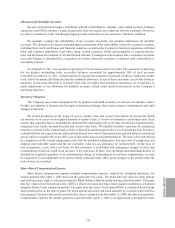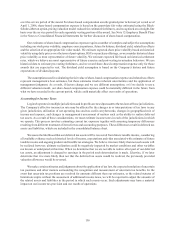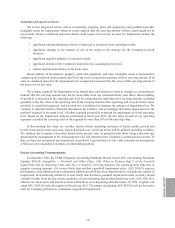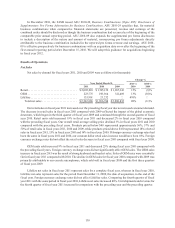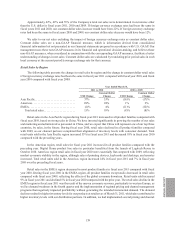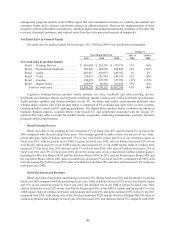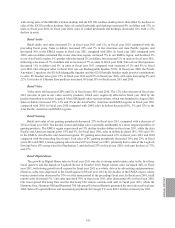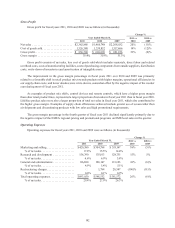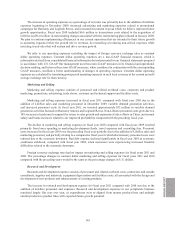Logitech 2011 Annual Report Download - page 145
Download and view the complete annual report
Please find page 145 of the 2011 Logitech annual report below. You can navigate through the pages in the report by either clicking on the pages listed below, or by using the keyword search tool below to find specific information within the annual report.
ANNUAl REPORT
133
the fiscal year ended March 31, 2011 were 35.4%, compared with 31.9% in fiscal year 2010, primarily due to the
impact of operational efficiencies across our supply chain and a favorable shift in product mix towards products
with higher margins. Our gross margin for fiscal year 2011 would have been higher but for the weak profitability
in our EMEA retail region in the fourth quarter.
Logitech is incorporated in Switzerland but operates in various countries with differing tax laws and rates.
A portion of our income before taxes and the provision for income taxes are generated outside of Switzerland.
Therefore, our effective income tax rate depends on the amount of profits generated in each of the various tax
jurisdictions in which we operate. For the fiscal years ended March 31, 2011 and 2010, the income tax provisions
were $20.0 million and $18.7 million based on effective income tax rates of 13.5% and 22.3% of pre-tax income. The
change in the effective income tax rate for the fiscal year ended March 31, 2011 compared with 2010 was primarily
due to discrete tax benefits of $13.5 million from the expiration of statutes of limitations and the closure of income
tax audits in certain jurisdictions. We expect future effective income tax rates to fluctuate for similar reasons.
Critical Accounting Estimates
The preparation of financial statements and related disclosures in conformity with generally accepted
accounting principles in the United States of America (“U.S. GAAP”) requires the Company to make judgments,
estimates and assumptions that affect reported amounts of assets, liabilities, net sales and expenses, and the
disclosure of contingent assets and liabilities.
We consider an accounting estimate critical if it: (i) requires management to make judgments and estimates
about matters that are inherently uncertain; and (ii) is important to an understanding of Logitech’s financial
condition and operating results.
We base our estimates on historical experience and on various other assumptions we believe to be reasonable
under the circumstances. Although these estimates are based on management’s best knowledge of current events and
actions that may impact the Company in the future, actual results could differ from those estimates. Management
has discussed the development, selection and disclosure of these critical accounting estimates with the Audit
Committee of the Board of Directors.
We believe the following accounting estimates are most critical to our business operations and to an
understanding of our financial condition and results of operations, and reflect the more significant judgments and
estimates used in the preparation of our consolidated financial statements.
Accruals for Customer Programs
We record accruals for product returns, cooperative marketing arrangements, customer incentive programs
and pricing programs. The estimated cost of these programs is accrued in the period the Company sells the product
or commits to the program as a reduction of revenue or as an operating expense, if we receive a separately identifiable
benefit from the customer and can reasonably estimate the fair value of that benefit. Significant management
judgment and estimates must be used to determine the cost of these programs in any accounting period.
Returns. The Company grants limited rights to return product. Return rights vary by customer, and range from
just the right to return defective product to stock rotation rights limited to a percentage approved by management.
Estimates of expected future product returns are recognized at the time of sale based on analyses of historical return
trends by customer and by product, inventories owned by and located at distributors and retailers, current customer
demand, current operating conditions, and other relevant customer and product information. Return trends are
influenced by product life cycle status, new product introductions, market acceptance of products, sales levels,
product sell-through, the type of customer, seasonality, product quality issues, competitive pressures, operational
policies and procedures and other factors. Return rates can fluctuate over time, but are sufficiently predictable to
allow us to estimate expected future product returns.


